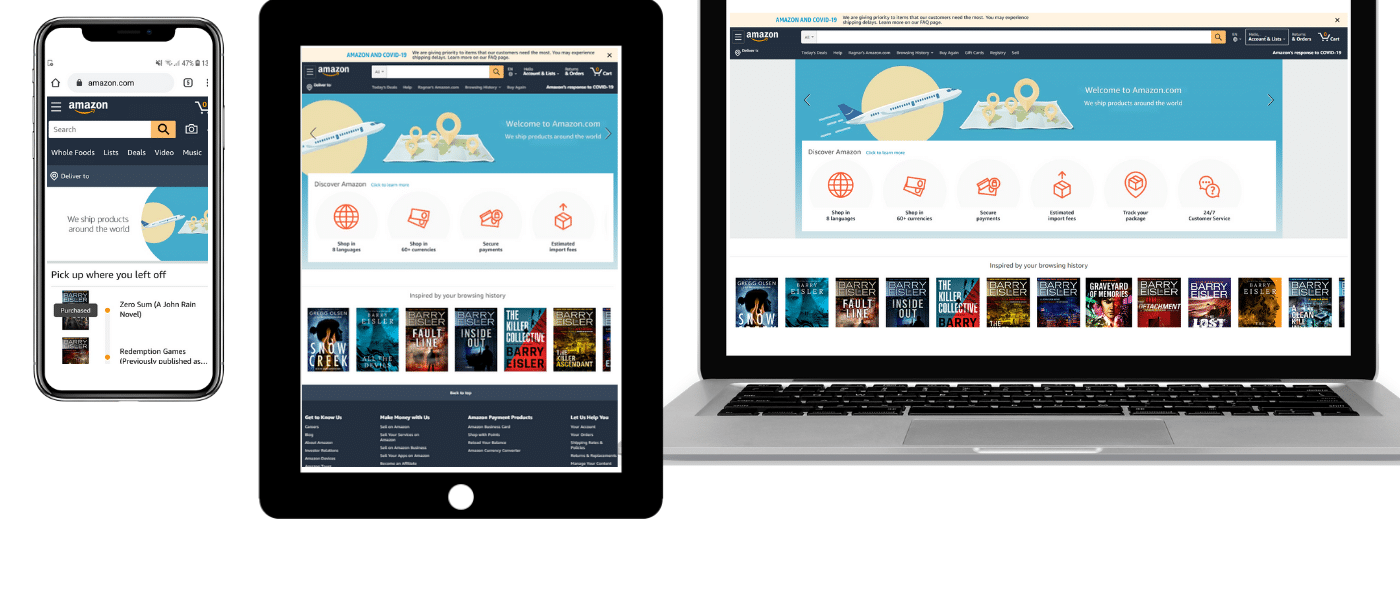Unveiling the Secrets of Ghosted Domains
Explore the intriguing world of expired domains and online opportunities.
Responsive Web Design: Because Your Website Shouldn't Need a Map
Transform your website into a user-friendly experience with responsive design—no map needed! Discover how to make your site shine on all devices.
Understanding the Basics of Responsive Web Design
Responsive web design is an approach that aims to create websites that provide an optimal viewing experience across a wide range of devices. From smartphones to tablets and desktop computers, the goal is to ensure that users can easily navigate, read, and interact with the website, regardless of their device's screen size. This technique involves using flexible layouts, images, and cascading style sheet (CSS) media queries to adapt the website's appearance to different screen resolutions.
To implement responsive web design, developers often rely on a combination of fluid grids, flexible images, and media queries. Fluid grids allow the design to scale proportionately to the screen size; flexible images are resized to fit within their containing elements; and media queries enable the application of different styling rules based on the device characteristics. By mastering these elements, web designers can create user-friendly, efficient websites that enhance the overall user experience.

5 Key Benefits of Responsive Web Design for Your Business
In today's digital landscape, responsive web design is more crucial than ever for businesses looking to enhance their online presence. The first key benefit is improved user experience. Websites that adapt seamlessly to different devices—be it a desktop, tablet, or smartphone—provide a consistent and engaging browsing experience. This adaptability not only satisfies visitors but also reduces bounce rates, keeping potential customers engaged longer.
Another significant advantage of responsive web design is its impact on search engine optimization (SEO). Search engines like Google prioritize mobile-friendly websites, which means having a single, responsive site can boost your rankings. Furthermore, maintaining one version of your site makes it easier to manage and optimize your content for both mobile and desktop users, ultimately driving more organic traffic to your business.
How to Test Your Website's Responsiveness Effectively
Testing your website's responsiveness is crucial to ensure that it provides an optimal viewing experience across a range of devices. Start by ensuring your site adapts to various screen sizes, including desktops, tablets, and smartphones. To effectively test responsiveness, you can utilize tools like browser developer tools, which allow you to simulate different devices. Another method is to use responsive design testing tools available online, which can emulate multiple devices simultaneously. Regularly checking your website's mobile-friendliness is essential, as a significant portion of web traffic comes from mobile users.
Additionally, it's important to evaluate the user experience on smaller screens. Pay attention to elements such as navigation menus, font sizes, and image scaling. Use the following steps to perform a thorough test:
- Open your website on different devices to assess its layout.
- Check interactive elements, such as buttons and forms, for responsiveness.
- Test load times; ensure they remain fast regardless of device.
- Gather user feedback on their experience navigating your site.
By following these steps, you can ensure your website is fully responsive and delivers a smooth experience for all users.